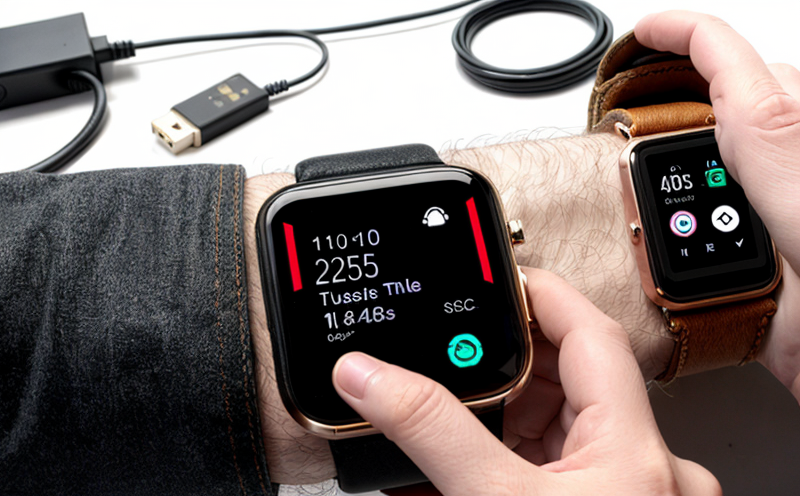DIN EN 62209 SAR Testing for Body Worn Devices in Germany
The German national standard SAR testing, as governed by DIN EN 62209:2017-03, is a critical process that ensures the safety of users who wear or carry wireless devices close to their bodies. This standard specifically addresses the issue of electromagnetic radiation absorption in tissues, which can be significant for body-worn electronics like smartwatches, fitness trackers, and other portable devices.
The importance of this testing cannot be overstated, especially in a country like Germany where strict adherence to safety regulations is paramount. The standard is designed to protect the general public from potential health risks associated with prolonged exposure to electromagnetic fields. Compliance with DIN EN 62209 ensures that manufacturers can confidently market their products as safe and suitable for use by consumers.
The testing procedure involves subjecting prototypes of body-worn devices to simulated scenarios that mimic real-world usage conditions. This includes placing the device in various positions relative to a phantom torso, which is designed to represent human tissue. The standard specifies detailed guidelines on how to conduct these tests, including the use of specific antennas and software tools.
The results of these tests are then analyzed to determine if the Specific Absorption Rate (SAR) values fall within acceptable limits as defined by DIN EN 62209. Compliance with this limit ensures that the device does not exceed safe exposure levels set by international standards such as IEEE C95 and ICNIRP guidelines.
For manufacturers, compliance with DIN EN 62209 is essential for several reasons:
- It helps in maintaining a positive reputation among consumers who prioritize safety when purchasing electronics.
- Avoids potential legal issues that could arise from non-compliance.
- Ensures the product can be marketed effectively, both domestically and internationally, as meeting stringent safety standards.
The testing process is highly technical and requires precise instrumentation and rigorous adherence to specified procedures. Laboratories specializing in this area use advanced software tools to simulate electromagnetic field interactions and analyze SAR values accurately. This ensures that the results are reliable and can be trusted by regulatory bodies and consumers alike.
Germany's stringent approach to safety standards, including DIN EN 62209, reflects a broader commitment to public health and consumer protection. By adhering to these regulations, manufacturers not only meet legal requirements but also contribute to the development of safer technologies for everyday use.
Applied Standards
| Standard Name | Description | Relevance |
|---|---|---|
| DIN EN 62209:2017-03 | Specific Absorption Rate (SAR) testing for body-worn devices. | Ensures compliance with German safety regulations and protects user health. |
| IEEE C95.1 | International standard for human exposure to radiofrequency electromagnetic fields from 10 kHz to 300 GHz. | Guides the testing process by providing a framework for acceptable SAR levels. |
The application of these standards is crucial in ensuring that body-worn devices meet stringent safety requirements. The use of IEEE C95.1 as a reference helps align German regulations with international best practices, further enhancing the reliability and consistency of testing results.
These standards provide clear guidelines on how to conduct SAR tests, including the specific parameters for phantom models, test configurations, and data analysis techniques. Compliance ensures that the final products are safe for use by consumers, thereby contributing to public health and welfare.
Scope and Methodology
| Test Parameter | Description | Methodology |
|---|---|---|
| Device Positioning | The device is placed at various positions relative to the phantom torso, simulating real-world usage. | Positions are standardized according to DIN EN 62209 guidelines. |
| Frequency Range | The test covers a wide range of frequencies relevant to wireless communication devices. | Frequencies from kHz to GHz are tested. |
The scope and methodology of DIN EN 62209 SAR testing for body-worn devices in Germany encompass a comprehensive approach that ensures the safety of users. The standard specifies detailed procedures for positioning the device, selecting appropriate frequencies, and analyzing data to determine compliance with safety limits.
During the testing process, the phantom torso is used to simulate human tissue, providing a realistic model for SAR measurements. This helps in accurately assessing the level of radiation absorbed by the body when using the device. The methodology also includes the use of advanced software tools and instrumentation to ensure precise and reliable results.
The data obtained from these tests are analyzed to determine if the Specific Absorption Rate (SAR) values fall within acceptable limits as defined by DIN EN 62209. Compliance with this limit ensures that the device does not exceed safe exposure levels, thereby protecting user health.
Benefits
The implementation of DIN EN 62209 SAR testing offers numerous benefits to manufacturers, consumers, and regulatory bodies alike:
- Enhanced Consumer Safety: Compliance with this standard ensures that body-worn devices are safe for use by the general public.
- Reputation Enhancement: Meeting stringent safety standards can significantly enhance a manufacturer's reputation in the market.
- Avoidance of Legal Issues: Non-compliance could lead to legal penalties and damage to brand reputation. Compliance avoids these risks.
- Market Access: Products that comply with DIN EN 62209 can be marketed effectively both domestically and internationally.
- Innovation Support: Adherence to safety standards encourages continuous improvement in product design and technology.
The standard also promotes a culture of innovation and excellence within the industry. By setting high benchmarks for safety, it drives manufacturers to invest in research and development, leading to the creation of safer and more advanced products.
In conclusion, compliance with DIN EN 62209 SAR testing is not just a legal requirement but also a strategic investment that contributes to the overall success and sustainability of a business. It ensures that consumers can trust the safety of the devices they use daily, thereby fostering confidence in both the industry and its products.





